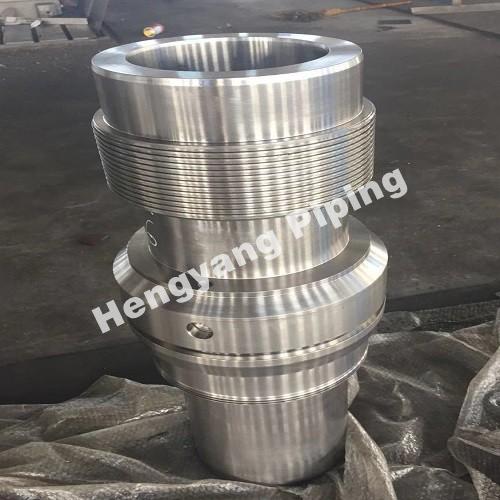Jan. 09, 2024
Minerals & Metallurgy
Inconel 625 and Inconel 718 are both high-performance nickel-based superalloys known for their exceptional corrosion resistance, high strength, and versatility. While they share some similarities, they have distinct compositions and applications. Here's a comparative overview of Inconel 625 and Inconel 718:
Chemical Composition:
Inconel 625:
Composition: Inconel 625 is primarily composed of nickel (58%), chromium (20-23%), and molybdenum (8-10%). It also contains smaller amounts of niobium, iron, and other elements.
Key Elements: Nickel provides corrosion resistance, while chromium enhances oxidation resistance. The addition of molybdenum improves resistance to pitting and crevice corrosion.
Composition: Inconel 718 consists of nickel (50-55%), chromium (17-21%), niobium (4.75-5.5%), and molybdenum (2.8-3.3%). It also includes smaller amounts of titanium, aluminum, and iron.
Key Elements: The high niobium content contributes to precipitation hardening, providing excellent strength and toughness at elevated temperatures.
Mechanical Properties:
Inconel 625:
Strength: Inconel 625 offers high tensile strength and excellent fatigue strength.
Temperature Resistance: It maintains good mechanical properties at elevated temperatures, making it suitable for various high-temperature applications.

Inconel 718:
Strength: Inconel 718 is renowned for its exceptional strength, especially in high-temperature environments.
Temperature Resistance: It exhibits excellent tensile and impact strength at elevated temperatures, making it suitable for aerospace and high-performance applications.
Corrosion Resistance:
General Corrosion: Inconel 625 is highly resistant to corrosion in various environments, including acids and seawater.
Localized Corrosion: Its molybdenum content enhances resistance to pitting and crevice corrosion.
Inconel 718:
General Corrosion: Inconel 718 demonstrates good corrosion resistance in many environments, including acidic and corrosive atmospheres.
Localized Corrosion: It provides resistance to pitting and crevice corrosion, although not as pronounced as Inconel 625.
Applications:
Inconel 625:
Chemical Processing: Widely used in chemical processing industries for its corrosion resistance.
Aerospace: Utilized in aerospace applications, marine engineering, and pollution control equipment.
Oil and Gas: Commonly found in oil and gas processing due to its resistance to sour gas and chloride stress corrosion cracking.
Inconel 718:
Aerospace: Predominantly used in aerospace applications, including aircraft engines and components.
Gas Turbines: Ideal for gas turbine components due to its high-temperature strength and corrosion resistance.
Nuclear Reactors: Applied in nuclear reactors and high-temperature environments.
Weldability and Fabrication:
Inconel 625:
Weldability: Inconel 625 is weldable using various methods, and it is often used in applications requiring welding.
Inconel 718:
Weldability: While weldable, Inconel 718 requires special precautions to maintain its desired properties after welding.
Conclusion: Inconel 625 and Inconel 718 are exceptional alloys with distinct compositions optimized for specific applications. Inconel 625 tubing excels in corrosive environments, making it a go-to choice for chemical processing. In contrast, Inconel 718, with its superior strength at elevated temperatures, finds extensive use in aerospace and high-performance applications. The selection between the two depends on the specific requirements of the intended application, considering factors such as temperature, corrosion resistance, and mechanical properties.
Previous: What are the Pros and Cons of Titanium?
Next: Understanding the difference between Pre-tensioning and Post-tensioning
If you are interested in sending in a Guest Blogger Submission,welcome to write for us!
All Comments ( 0 )